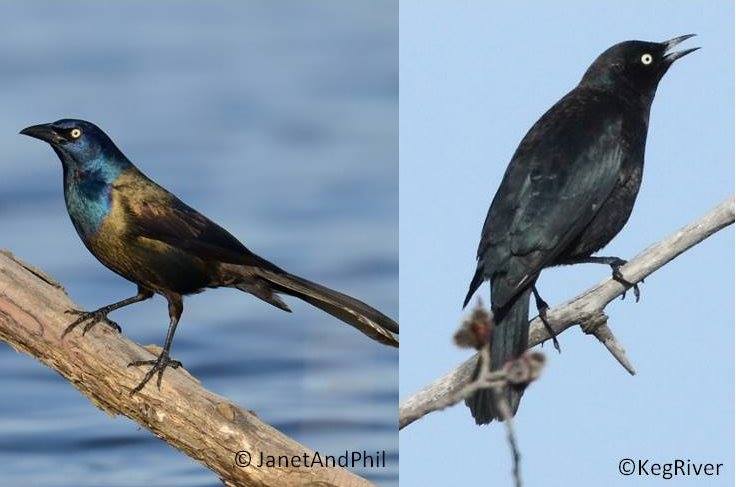Tips on Identification and Habitat Selection
Rusty Blackbirds can be tricky to differentiate from other blackbirds in the spring. Our detailed Rusty Blackbird Identification Guide will help you brush up on your identification skills and reliably identify Rusty Blackbirds in the field.
Wondering where to search for Rusty Blackbirds? Our optional Rusty Blackbird Blitz datasheet lists potential Rusty Blackbird habitat types, and you can visit our habitat resource page to see examples of common habitats where you might find Rusties.
Other Recommended Resources
Looking for a basic overview of Rusty Blackbirds, their natural history, their habitat preferences, and identification tips? Try The Cornell Lab of Ornithology’s All About Birds page.
Do you want to test yourself by comparing pictures of look-alike species and listening to their vocalizations? NatureInstruct’s Dendroica hosts a wide array of photographs and sounds and allows you to customize the Quiz option to focus on species of interest.
Want to brush up on your sound identification skills? Listen to Rusty Blackbird vocalizations from throughout North America at Xeno-Canto.

Male Common Grackles (left) have glossy purple heads, heavy bills, and elongated bodies. In the spring, male Rusty Blackbirds (right) are a glossy black with a more slender bill and a less wedge-shaped tail.
